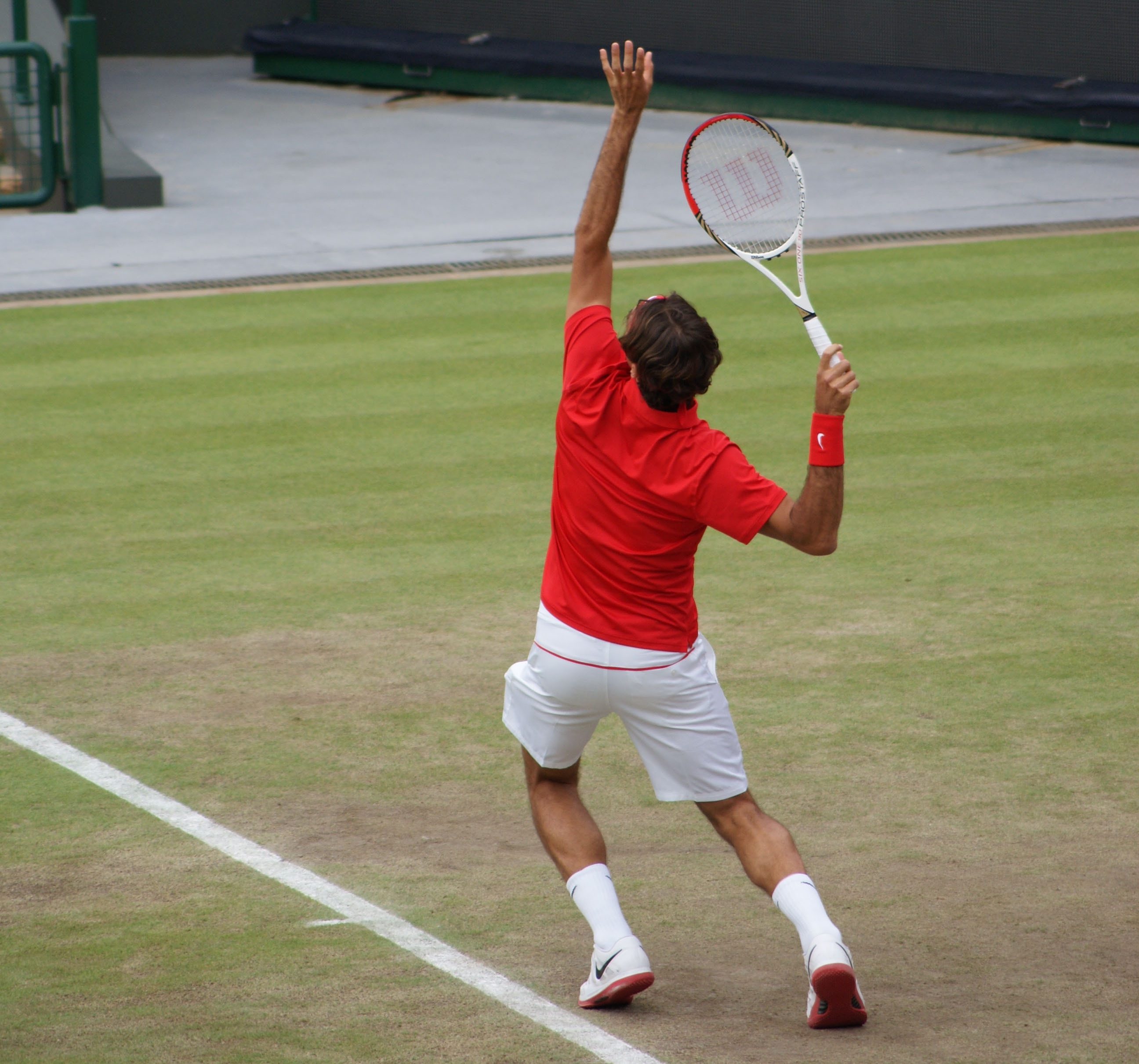Tennis can be played on a number of surfaces. These surfaces have their own characteristics. The materials used to make the surface impact the speed of the court, initial costs, and maintenance costs.
What are tennis courts made of?
Hard Courts
Hard courts are the most common tennis courts. More tournaments are played on hard courts than on any other surface.
Hard courts are made with concrete or asphalt foundation. Acrylic or synthetic layers are added on top. The speed of the hard courts can be changed by varying the amount of sand in the acrylic or synthetic layer. More sand results in higher friction and lower bounce and slower speed.
Australian Open and US Open are played on hard courts. There are multiple brands of hard courts. For example, the Australian Open uses the Greenset brand while the US Open uses Laykold.
Asphalt courts
Asphalt courts have asphalt foundations but no synthetic or acrylic layers on top. Because of that, they tend to deteriorate over time, especially with exposure to the sun.
Asphalt they are cheaper to build. Some public tennis courts are asphalt courts. But the long-term maintenance costs can add up when asphalt courts start developing cracks.
There are no professional tennis tournaments played on asphalt courts.
Concrete courts
Concrete courts have concrete foundations but no synthetic or acrylic layers. These courts are cheaper to build but suffer from the same disadvantages as asphalt courts.
There are no professional tournaments played on concrete courts.
Clay
The court is built with multiple layers of stone, gravel, and brick. At the French Open, the clay consists of five layers that add up to 80 cm.
Bottom to top, the five layers are stones, gravel, clinker, limestone, and finally a thin layer of crushed brick. It’s the crushed brick that gives the courts the red color.
Clay courts can are red or green. Red clay courts are popular in Europe and South America. In the US, you will find several green courts. In general, red clay is slower than green clay. The slowness of the clay leads to long rallies and favors baseliners.
Clay courts are cheaper to construct but are expensive to maintain. The clay must be rolled often and water content must be balanced.
Artificial Clay
Artificial clay is made of synthetic carpet that imitates the characteristics of natural clay. The carpet has sand infills with fibers that make the balls bounce just like on a regular clay court.
These courts are approved by the ITF and can be used for tournaments, though no tournaments are played on this surface.
Grass
The fresh lawn court on day 1 of Wimbledon is one of the most beautiful sights in tennis. Grass court is very short and only a handful of professional tournaments are conducted on grass.
Grass courts are fast. But grass courts are expensive to maintain. The ball bounces low and the points tend to be quick. Until the last 10 years or so, grass courts favored serve-and-volleyers.
The grass is grown on hard-packed soil and must be watered and mowed regularly. Maintenance costs are high for grass courts.
Currently, Wimbledon is the only grand slam played on grass. The US Open and the Australian Open used to be played on grass. The US Open was played on grass until 1974 and the Australian Open until 1987.
Carpet
Carpet courts consist of a foundation layer made of asphalt with a removable carpet or mat on top. Carpets can be made of rubber or artificial turf.
Carpets courts are fast and favor big servers. Carpet courts are no longer used at ATP and WTA tournaments. A few lower-tier tournaments still use them.
Indoor
Indoor courts have a roof but in terms of the playing surface, they can be any of the court types discussed above. Indoor courts permit tennis to be played when temperatures are cold outside or when it’s raining.
Indoor courts tend to be faster than outdoor courts due to compressed air. The lack of wind means that players’ shots are more accurate. Bounces are also lower in indoor courts.
Many courts used at grand slams have retractable roofs. When the roof is closed during a match, you will notice that it sometimes shifts the momentum of the match because indoor courts behave differently from outdoor courts.
